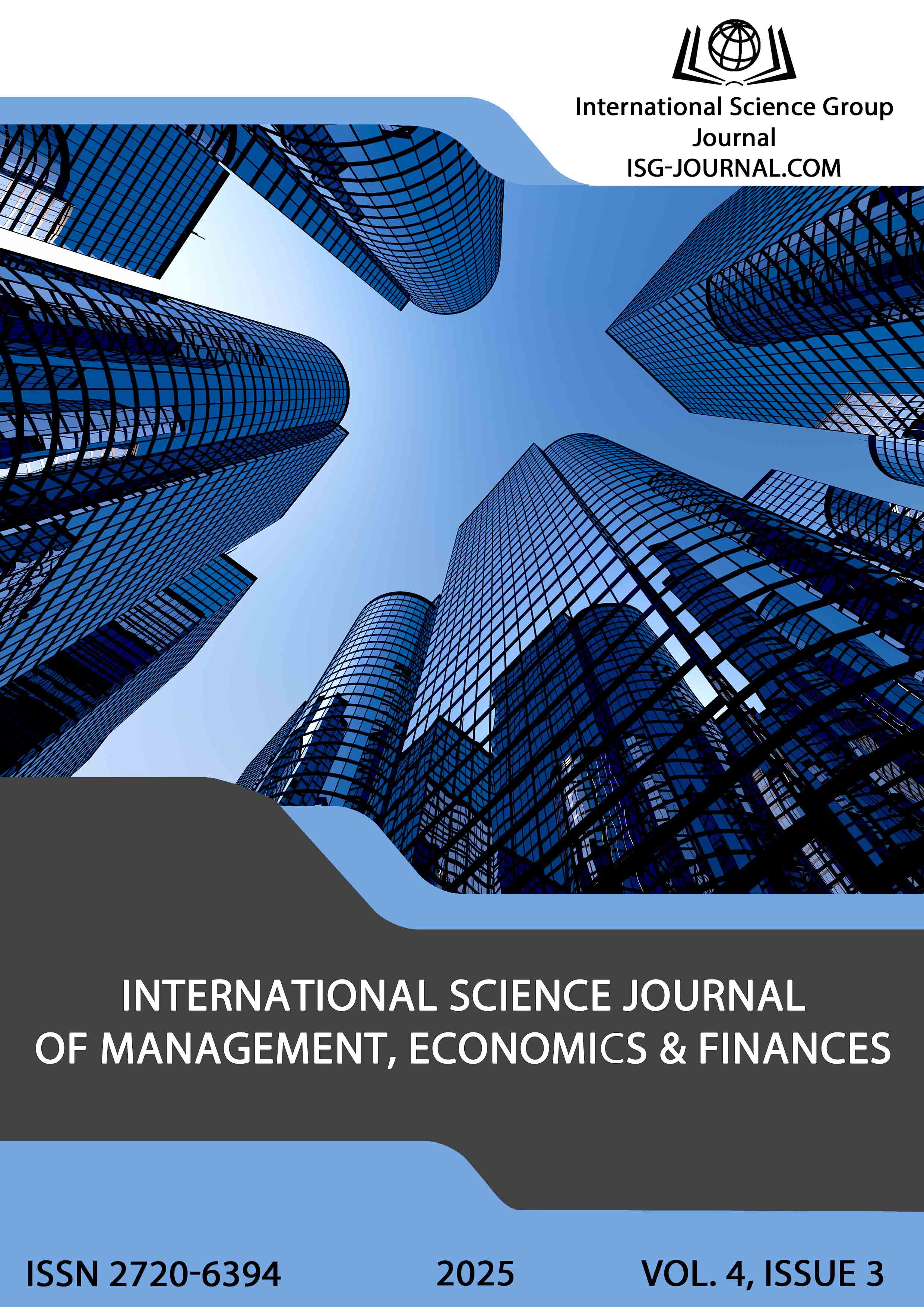Financial tools for managing corporate capitalization in Kazakhstan: a qualitative analysis of strategies, institutions, and market realities
DOI:
https://doi.org/10.46299/j.isjmef.20250403.09Keywords:
Corporate finance, capital structure, equity financing, debt financing, hybrid instruments, AIFC, financialization, emerging markets, qualitative analysisAbstract
This study explores how companies in Kazakhstan manage their capital structure and financing in the context of an emerging economy undergoing financial reforms. It adopts a qualitative case study approach to examine the mix of equity, debt, and hybrid financial tools in use, with a focus on the influence of institutions like the Astana International Financial Centre (AIFC) and broader market conditions. Key theoretical lenses – the Trade-Off Theory, Pecking Order Theory, and Financialization Theory – guide the analysis of corporate financing decisions. The findings highlight that Kazakhstani firms predominantly rely on internal funds and bank loans, consistent with pecking-order preferences, while equity markets remain in a nascent stage despite recent initial public offerings (IPOs) and AIFC initiatives. Hybrid instruments such as convertible bonds are rarely utilised, reflecting market unfamiliarity and structural barriers. The research underscores the implications for corporate strategy (e.g. diversifying funding sources and managing currency risk) and for policy (e.g. strengthening capital markets, enhancing investor base). It offers context-specific insights into Kazakhstan’s financial landscape and provides recommendations to improve corporate capitalization strategies and support economic development.References
Adilkhanova, Z., Nurlankul, A., Token, A., & Yavuzoglu, B. (2022). Trade credit and financial crises in Kazakhstan. Journal of Asian Economics, 80, 101472. https://doi.org/10.1016/j.asieco.2022.101472
Astana International Financial Centre. (2020, June 9). Local retail investors show strong demand for Kazatomprom shares & GDRs. AIFC News. https://aifc.kz
Bruno, G. (2015, April 21). For emerging markets, local capital is key. World Economic Forum. https://www.weforum.org
Capital City Training Ltd. (2023). Pecking Order Theory: Definitions, Concepts and Examples. https://capitalcitytraining.com
Capital.com. (2023). Trade-off model of capital structure – Definition. https://capital.com
Corporate Finance Institute. (n.d.). Pecking Order Theory – Overview, Illustration, Example. Retrieved April 15, 2025, from https://corporatefinanceinstitute.com/resources/valuation/pecking-order-theory/
Cohen, A. (2018, November 27). Kazatomprom IPO with Astana International Financial Center (AIX) shows global appetite for uranium. Forbes. https://www.forbes.com
Davis, G. F., & Kim, S. (2015). Financialization of the economy. Annual Review of Sociology, 41, 203–221. https://doi.org/10.1146/ANNUREV-SOC-073014-112402
Development Bank of Kazakhstan. (n.d.). Services. Retrieved April 15, 2025, from https://www.kdb.kz/en/services/
Epstein, G. A. (2019). Financialization, rentier interests and central bank policy. https://doi.org/10.4337/9781788978415.00024
FocusEconomics. (n.d.). Kazakhstan interest rate. Retrieved April 15, 2025, from https://www.focus-economics.com/country-indicator/kazakhstan/interest-rate/
Ivashina, V., & Çekin, E. (2019). Kaspi.kz IPO (HBS No. 220-007). Harvard Business School. https://www.hbs.edu/faculty/Pages/item.aspx?num=56825
London Stock Exchange. (2020, October 7). London Stock Exchange welcomes Kaspi.kz to the Main Market. https://www.londonstockexchange.com
National Bank of Kazakhstan. (2024, November 29). NBK raises base rate to 15.25%. The Astana Times. https://astanatimes.com
Qazaqstan Investment Corporation. (n.d.). To business. Retrieved April 15, 2025, from https://qic.kz/en/biznesu/
Rapoza, K. (2020, October 15). Kazakhstan fintech firm Kaspi surprises with huge London IPO. Forbes. https://www.forbes.com/sites/kenrapoza/2020/10/15/kazakhstan-fintech-firm-kaspi-surprises-with-huge-london-ipo/
Reuters. (2020, October 8). Kazakhstan’s Kaspi valued at $6.5 billion in London IPO – bookrunner. https://www.reuters.com/article/business/kazakhstans-kaspi-valued-at-65-billion-in-london-ipo-bookrunner-idUSKBN26T108/
Voloshin, G. (2018, November 7). Kazatomprom IPO to test-drive Kazakhstan’s privatization plan. Eurasia Daily Monitor, 15(159). The Jamestown Foundation. https://jamestown.org/program/kazatomprom-ipo-to-test-drive-kazakhstans-privatization-plan/
World Bank. (2024, March). Republic of Kazakhstan: Financial Sector Assessment Program—Technical Note: Capital Market Development. https://documents1.worldbank.org/curated/en/099041124104518186/pdf/P18031011e5d4c01d182281c2aed58895de.pdf
World Economic Forum. (2015). Local corporate bond markets in emerging economies. https://www.weforum.org
Zsolt, B., & Yoon, Y. (2023). Republic of Kazakhstan FSAP Technical Note: Capital Markets. World Bank. https://documents1.worldbank.org
Downloads
Published
How to Cite
Issue
Section
License
Copyright (c) 2025 Tong Tong, Gulmira Yesenovna Kassenova

This work is licensed under a Creative Commons Attribution 4.0 International License.






